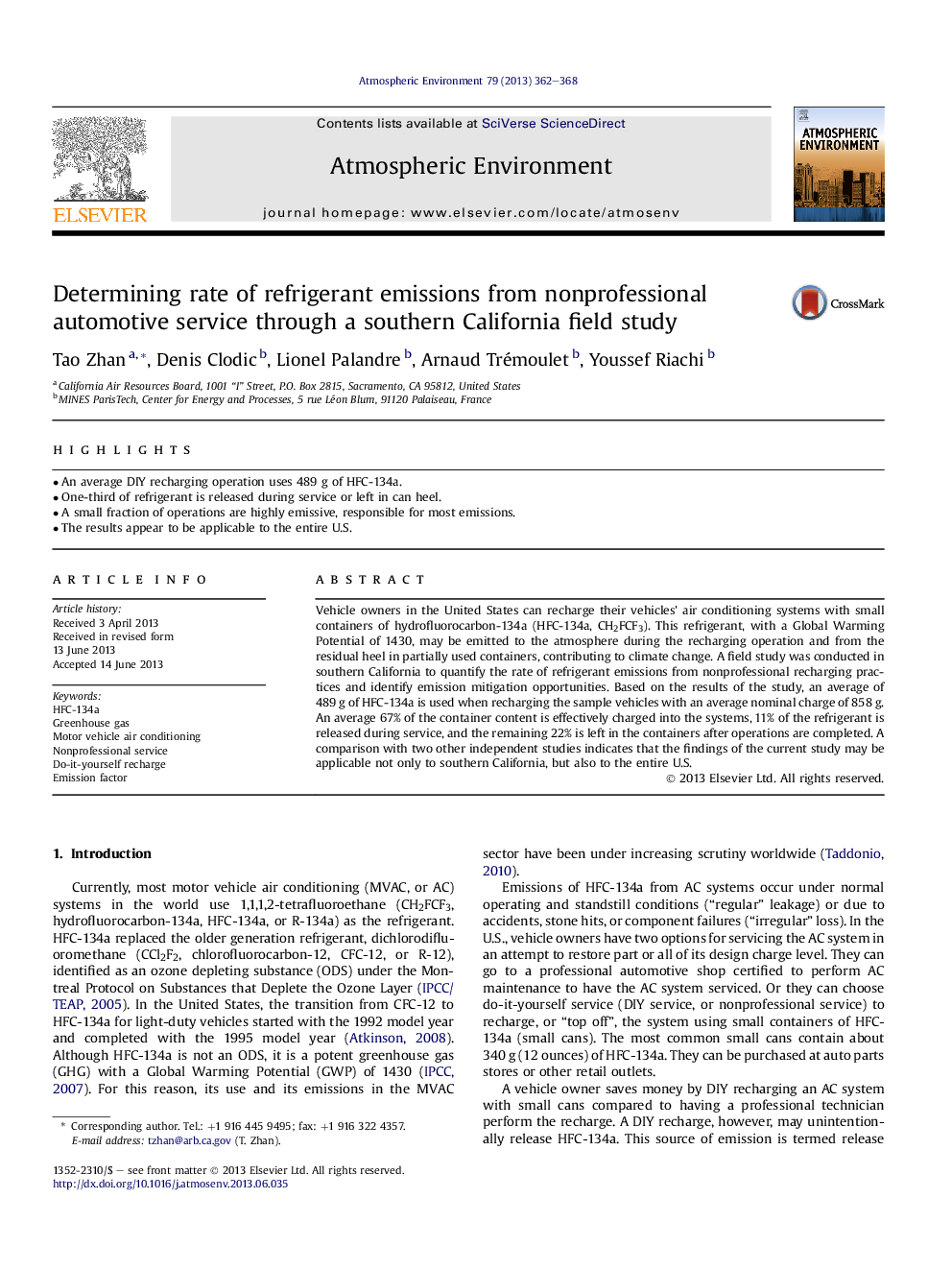| Article ID | Journal | Published Year | Pages | File Type |
|---|---|---|---|---|
| 6341483 | Atmospheric Environment | 2013 | 7 Pages |
Abstract
Vehicle owners in the United States can recharge their vehicles' air conditioning systems with small containers of hydrofluorocarbon-134a (HFC-134a, CH2FCF3). This refrigerant, with a Global Warming Potential of 1430, may be emitted to the atmosphere during the recharging operation and from the residual heel in partially used containers, contributing to climate change. A field study was conducted in southern California to quantify the rate of refrigerant emissions from nonprofessional recharging practices and identify emission mitigation opportunities. Based on the results of the study, an average of 489Â g of HFC-134a is used when recharging the sample vehicles with an average nominal charge of 858Â g. An average 67% of the container content is effectively charged into the systems, 11% of the refrigerant is released during service, and the remaining 22% is left in the containers after operations are completed. A comparison with two other independent studies indicates that the findings of the current study may be applicable not only to southern California, but also to the entire U.S.
Related Topics
Physical Sciences and Engineering
Earth and Planetary Sciences
Atmospheric Science
Authors
Tao Zhan, Denis Clodic, Lionel Palandre, Arnaud Trémoulet, Youssef Riachi,
